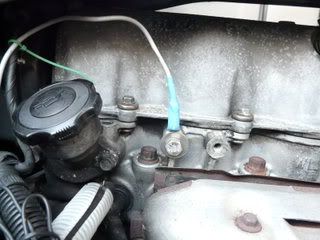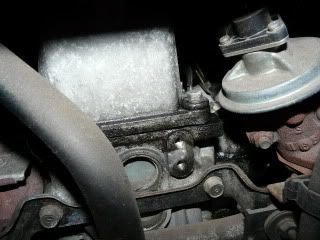lindeelu wrote:Not bunkum, but not based on practical experience.
If you have ever used a block sensor you will know how very sensitive they are (1 degree C)
I feel someone is trying to re-invent the wheel here.
In past posts certain people have expressed the view that a pressurisation event can cause overheating
yet leave the expansion tank full or even overfull.
Haydn designed the Hi-level alarm to deal with this.
Now he has gone one step further and commissioned a combined low coolant alarm combined with
a temperature sensor that is independent of coolant being present or not.
It doesn't get any better than that.
So, now he has found, via a customer who experimented, a more suitable position for the sensor.
Good on him I say.
All the theory in the world is easily beaten by one ounce of real world experience.
All the car makers do sense coolant temperature.... that's why so many engines are destroyed every year
from overheating events.
Aftermarket alarms are not designed to measure coolant temperature to control various ECU functions
such as fuel delivery & timing so don't need a one second up date interval.
They are there soley to protect the engine from expensive disaster.
Thanks for that. The thing is lindeelu, that it is the practical observations that have prompted my question, not some preoccupation with theory. This is evidenced by the fact that experimentation is still going on as to the best position for the sensor. The TM2 alarm (which originated in Australia I believe) is, I know, very sensitive, but that is not the issue. But in order to be able to advise owners that their temp. readings are unusually high and that something could be amiss, we need to have established what is 'normal' (just as with human body temps) using valid comparative data. To do that, we have to decide on the best standard place for determining the temperature (just as with the human body) - somewhere away from extraneous influences. With the human body, practical experience has established that blood temperature is a good standard temp. to measure, and we look for somewhere aways from the influence of surface cooling to meaure it. Practical experience has determined that short of inserting a sensor into a blood vessel, under the tongue, under the armpit, up the b*m are the places of preference.
To reinforce the point about practical experience and bring it colser to home. As far as I am aware, people who are serious about giving operators a warning of engine problems (aircraft engineers, racing car engineers etc. etc.) seem to have arrived, following practical experience, at measurement of oil temperature as being of key importance/value and this has been accepted practice for many years. I am not aware of measurement of surface temp having been used in this way to detemine if all is well with the 'heart' of an engine, though I daresay they are used in supporting roles
My conclusion about the TM2 is that it was designed as a quick to fit means of warning of unusual temperature rise (I seem to recall it selling itself as insurance against a cooked engine). That's fine for extreme events but - with the sensor mounted where it is - I think it is probably not the best device in trying to establish comparative data on normal and abnormal temperatures. On that score, we may need to do 'better than that'. So in a way, the TM2 is trying to reinvent what measurement of oil temp. had been doing, and almost certinaly doing better, for many years before its arrival.
Getting back on thread then, where might we position the TM2 sensor to measure oil temp?








